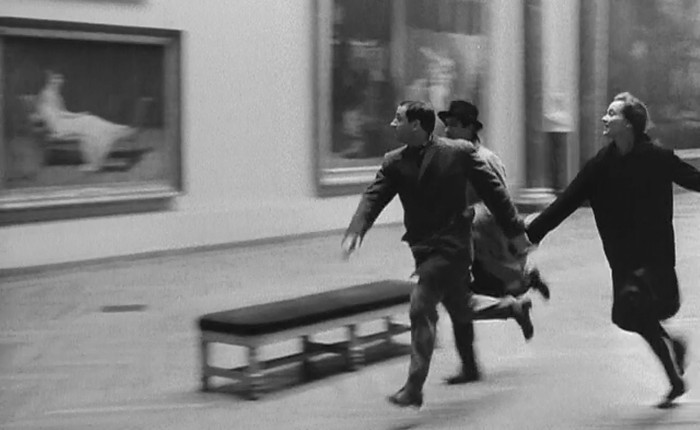Jadé Fadojutimi’s The Numbing Vibrancy of Characters in Play is the painter’s first solo exhibition in a UK public institution. AJ Dehany asked her about the show, which includes new large-scale works created specifically for the space at PEER.
The Numbing Vibrancy of Characters in Play is your first UK solo exhibition in a public gallery. What does this title mean, with its oxymoron in “numbing vibrancy”?
The title of the show has many layers to it. It references the appearance of characters in my work and my reluctance to accept their existence. I felt like my work was leaning more towards figuration, and although other people may not see the characters that I see, they were becoming recognisable and familiar to me. While trying to fight their existence, I realised that I couldn’t reject the natural progression of my work. I decided to embrace these characters and give them centre stage. The show at PEER was an exploration of these new ideas. I prefer not to over-analyse the specific wording of my titles because the language can become suffocated. Words are a choice and are as open and fluid as the work: they have many ingredients. The titles came about through natural association with the paintings in the show, but I don’t like to decide the title of a painting before it’s made. This phrase, however, has been stuck on the wall of my studio for months. It made sense that it referenced the experience of the body of work and was more suited to an exhibition title.

You say that your paintings fluctuate between abstraction and formal motifs. How hard is it to maintain that balance? Is this related to the notion of ‘Familiar unfamiliarity’?
The work sits transiently between figuration and abstraction, with each painting at its own point on the spectrum. They waver between the two, dipping in and out of recognition, into the pool of familiarity and then retreating back to something almost unrecognisable, becoming a new entity in its own right.
These are new large-scale works — what is it about working at scale that was important to you in creating them at this time?
I’ve always worked on a large scale because I see the works as environments: places, worlds and spaces that can be entered, inviting me in as they are built. The scale orientates the work towards its destination. If I make a smaller work, it almost feels like a photograph of a place. That’s not to say I don’t make small works. I believe the best painters can do both and so I continue to play with scale and explore what the function of a smaller work has for me and its own potential. I enjoy the challenge.

Writing plays a large part in your creative process — and the word “character” has many meanings signifying people, their personalities, and letters on a page — what’s the relationship between words and images in your mind?
I see the writings as extensions of my works, comparable to when I’m making a painting and I instinctively decide the next mark or colour or form. The writings are reactions themselves. They take place as I paint, becoming an extension of the works consciousness itself. They are thoughts. The same way the brushstroke is a thought, question, processing and exploration in excitement.
Your painting and writing often happens in tandem, and usually late into the night, in extended bursts of activity accompanied by music: a multisensory phantasmagoria—what energies does that release?
I work to the soundtracks of animations, videogames and dramas that excite me. These allow me to return to those moments of curiosity I experience when watching or playing them. In these moments I am led on journey where I revel in the depths of my own being whose existence I am unaware of.
Completely taken by a revelation I can’t quite comprehend, I hope to understand their significance through painting. My work often pulls together things that steal my gaze spontaneously. They merge with each other to reveal the final image in a painting. Afterwards, I continue to ponder them. I am always taken by the narrative power of these images, even when I do not fully understand their origin.
Their power to reveal and reflect myself remains an eternal curiosity. Why do I indulge in them the same way I indulge in painting? From the beginning, I’ve wanted to share these experiences through painting.

There are influences cited from significant women abstract artists such as, Amy silman, Charline Von Hyle, Laura Owens, Varda Caivano, Nicola Tyson, and Phoebe Unwin. What is your relationship to these practices, especially in how it might affect these works?
When looking at these painter’s work, they allow me to realise what I want from my own work. They aren’t necessarily a direct visual influence, but a way to extract my own work’s purpose. I often question what it is specifically in someone’s works that I enjoy and what makes that painter special. In exploring these aspects, whether it being colour, energy, form or movement, etc. I understand myself and my paintings more. It is equally important in that sense to look at work I don’t necessarily enjoy. All these painters have a complexity in the their painting language with a great tension that is personally inviting to me.

How has your practice been affected by your recent exchange in Japan?
My time in Japan allowed me to come to terms with myself, flaws and all, and embrace them. In accepting and understanding myself, I was able to understand how I like to work. I have always had a fascination with the country and it’s subculture due to my obsession with Japanese animation from early teenage years, influencing my work. Hence, it became important for me to go there and make work, which I had the opportunity to do through the RCA. My excitement to finally make work there however, created a struggle with my frustration in myself. I found it difficult to make work and enjoy my time there to which I saw no excuse due to having been before and having an understanding of the language. I found myself relying on material goods to feel comfortable and wallowing instead.
Eventually I hit rock bottom and at that point instead of questioning my shortcomings, I began to question why I was questioning them in the first place. A realisation that my perception of how I should behave and feel was derived from a societal expectation instead, created a frustration in society rather than myself, liberating the work and myself. No longer perceiving my impatience and lack of focus as a flaw, I began to work faster and jump onto new ideas quickly. I began to delve into the complexity of a place that I yearned for and its rejection of my being, through into a limbo of wanting to be there, knowing that my personality was shackled to London.

How did you get involved with arts organisation PEER who are presenting this show?
I started working with Pippy Houldsworth Gallery soon after graduating from the Royal College of Art. The director of PEER, Ingrid Swenson, saw my work in their viewing room during Frieze and realised she had also seen my painting at the RCA degree show in 2017. Here the conversation began and after my solo show, ‘Heliophobia’ at Pippy Houldsworth, she proposed an exhibition.
What are you working on at the moment and what happens next?
I’m currently exploring my work’s potential for growth after much experimentation in both my shows, at PEER and at Galerie Gisela Capitain, Cologne. When a new thought process begins, I tend to go to Japan. I am going there for a month at the end of April to understand how my complicated relationship with the place and my work has changed. I tend to write and draw whilst there. Upon my return this summer, I’m excited to explore new ideas with a new body of work: a new step forward in the work’s growth and my own, which is integral to my practice.
The Numbing Vibrancy of Characters at Play, Jadé Fadojutimi. 31 January to 23 March 2019. PEER, 97/99 Hoxton Street, London N1 6QL. Opening hours: Wednesday – Saturday, 12:00pm – 6:00pm. Free admission. Telephone 020 7739 8080. www.peeruk.org
AJ Dehany is based in London and writes independently about music, art and stuff. ajdehany.co.uk










